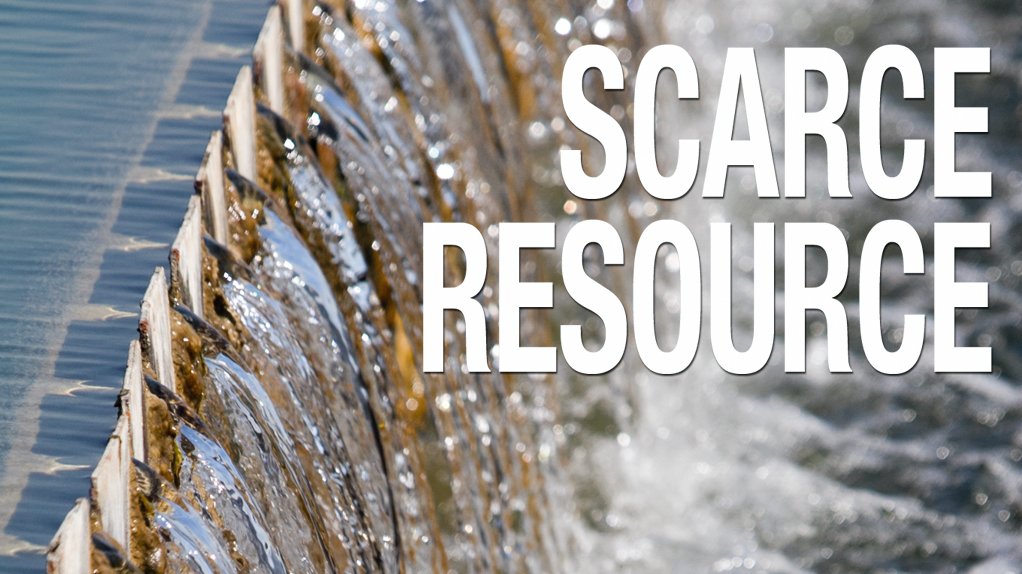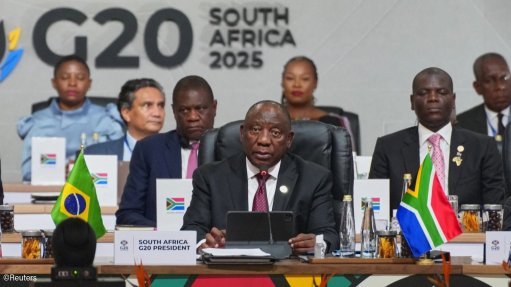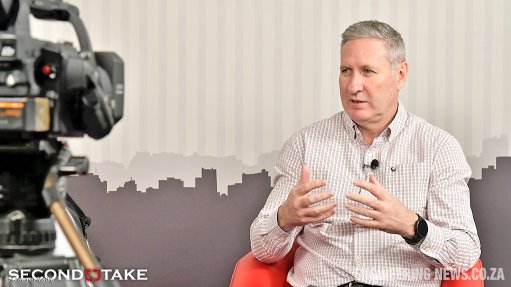Strong planning urged as SA begins to come to terms with its water scarcity
It is common cause that South Africa is facing various challenges with regard to its water resources and the manage- ment thereof. It is also well recognised that South Africa needs to intensify its efforts to protect its already limited water resources and materially improve the efficiency of water use.
But the development of new and, as critically, the maintenance of existing water and wastewater infrastructure is also a priority – one reflected in the fact that the Presidential Infrastructure Coordinating Commission (PICC) has included water and sanitation among its 18 Strategic Infrastructure Projects, or Sips.
In fact, Sip 18 aims to ensure a sustainable supply of water to meet social needs and support economic growth, as well as a comprehensive sanitation service that enhances community wellbeing, reduces healthcare costs and improves productivity.
This cluster of projects is part of a ten-year plan intended to address current backlogs by providing water for 1.4-million households and sanitation for 2.1-million households.
But Sip 18 has been unveiled in a context where more than half of South Africa’s wastewater-treatment works are in dire need of maintenance and repair.
In addition, there is a need to improve arrangements with respect to national entities, catchment management agencies and water boards are proposed for the water institutions responsible for infrastructure, with a replacement value of about R968-billion.
Overall, the desire of the infrastructure push is to ensure that citizens have access to clean, potable water and hygienic sanitation, and that there is also enough water to meet the needs of agriculture and industry.
Water Affairs Minister Edna Molewa said at the release of the second edition of the Department of Water Affairs’ (DWA’s) National Water Resource Strategy (NWRS-2) in June, that nine major water resource infrastructure projects were currently in progress, some of which were nearing completion.
“The department is finalising the infrastructure planning to develop, update and maintain water reconciliation strategies for all water resource systems and towns under water-supply stress. These plans include projects at Mbombela, in Mpumalanga; on the Orange river; at Richards Bay, in KwaZulu-Natal (KZN); and in Luvuvhu-Letaba, in Limpopo,” she said.
The NWRS-2 also indicates that strategic actions are planned in the form of rehabilitating water infrastructure, developing and managing groundwater harvesting strategies, water reuse, desalinating seawater, dealing with acid mine drainage, rainwater harvesting and hydroelectric generation.
CURRENT PROJECTS
Several major water infrastructure projects are already in the process of either being implemented or planned.
The De Hoop dam, which is being constructed in Limpopo province as part of the second phase of the Olifants River Water Resources Development Project, will be a bulk storage facility to augment the current water supply around the Steelpoort and Olifants rivers. It also involves the laying of major pipelines to deliver water from the dam to the mining industry in the Steelpoort area.
It is a R4.5-billion project and is scheduled for completion by the end of next year. The dam will be the thirteenth-largest in the country and is expected to have a 347-million-cubic-metre reservoir capacity.
This phase of the project will result in connecting the water-treatment works at Steelpoort with the De Hoop dam. The pipeline to Sekuruwe, in the Waterberg area, and to Pruissen, in the Capricorn area of Limpopo, is also planned to start this year.
The Mokolo-Crocodile water augmentation project, meanwhile, involves the construction of several large pump-stations, more than 170 km of pipeline and an abstraction works, all of which require the creation of significant supplementary infrastructure. Phase 1 entails the construction of a new pumpstation at the existing Mokolo dam and a 43 km pipeline of up to 1 100 mm in diameter to deliver about 30-million cubic metres of bulk water a year from the Mokolo dam.
The Phase 1 infrastructure will be constructed parallel to and tie in with existing infrastructure, supplying water to Exxaro’s Grootegeluk mine, Eskom’s Matimba and Medupi power stations and the Lephalale local municipality, in Limpopo.
The project to raise the Hazelmere dam wall, on the Mdloti river, in KZN, includes the installation of gates on the dam’s spillway and the stabilisation of the wall at a cost of R359-million. The project also requires the upgrading of Umgeni Water’s Hazelmere water treatment plant (WTP) and the pumpstation pumping water into the distribution network. The water from the WTP is pumped through a 20-km-long, 700-mm-diameter pipeline into a distribution reservoir, 93 m above the pumpstation. The project is due to start in October.
The Mooi-Mgeni Transfer Scheme Phase 2 involves the construction of the Spring Grove dam and the associated transfer system, in Rosetta, on the Mooi river, in the KZN Midlands, and a conveyance system to transfer water to the Mgeni river catchment.
Once constructed, the new system will augment the current yield of the Mgeni system by an additional 60-million cubic metres of water a year, address water delivery backlogs and improve the security of supply in the region. The Spring Grove dam is expected to increase the yield of the Mgeni system from 334-million cubic metres to 394-million cubic metres a year. The dam will be about 42 m high, with a gross storage capacity of 142.5-million cubic metres.
Plans for the raising of the Clanwilliam dam, in the Western Cape, are also said to be at an advanced stage and construction for raising the dam wall should start early next year.
The raising of the Tzaneen dam by three metres to increase its storage capacity from 158-million cubic metres to 203-million cubic metres and the construction of the Nwamitwa dam, both on the Groot Letaba river, in Limpopo, form part of the greater Groot Letaba Water Development Project.
In addition, the Lesotho Highlands Water Project (LHWP) Phase 2 – which involves building the Polihali dam, in Lesotho, is being prepared for implementation by the governments of South Africa and Lesotho through the Lesotho Highlands Development Authority.
Molewa indicates that the project is being prioritised by the DWA and the Trans-Caledon Tunnel Authority for completion in 2020. The LHWP is a water supply project with a hydropower component, developed in partnership between the governments of Lesotho and South Africa, primarily to secure a water supply to South Africa.
Also being given high-level attention is the proposed development of a major storage dam in the Mzimvubu river catchment, in the Eastern Cape. Planning for the dam is believed to be well advanced, with the objective being to prepare for a substantial increase in investment in irrigation infrastructure in Makatini Flats and the Mzimvubu river basin.
BEYOND INFRASTRUCTURE
At the launch of the NWRS-2, Molewa stressed that, besides the PICC infrastructure focus, emphasis is also being given to supporting the measuring of water demand and pressure management, as well as to tackling water leaks and raising water demand awareness.
The strategy recognises that the challenges of water supply include environmental degradation, resource pollution and inefficient water use.
It also underlines the vital role of water resources in economic growth and social development.
The NWRS-2 Implementation Plan, therefore, proposes that resource protection, infrastructure planning, operation and maintenance, as well as compliance monitoring and enforcement be pursued simultaneously.
It also proposes the development of a collective, detailed implementation plan, in consultation with sector partners, to clearly identify roles and stipulate measures to monitor progress.
WATER REUSE STRATEGY
The DWA will address water reuse by developing practical guidelines for water reuse projects and by working with other national departments to align legislation to reduce regulatory burdens and obstacles.
The department states in the strategy that it will act as the lead regulatory authority and will work with municipalities to ensure that municipal by-laws support the appropriate reuse of water. Legislation will then be revised to accommodate the need to facilitate, streamline, encourage and control water reuse projects.
The water reuse strategy states that the department will also encourage the Water Research Commission to make water-reuse technology development a key focus area and encourage the development of centres of excellence at selected universities.
Further, Molewa explains that the strict enforcement of discharge standards and addressing the management and performance failures of municipal wastewater treatment plans is critical to the future of indirect water reuse.
SANITATION
Sip 18’s aim is also to address the backlog of providing adequate basic sanitation for about 2.1-million households. This element rests primarily with the Department of Human Settlements (DHS), which has not yet finalised specific projects to address the Sip 18 sanitation goals.
Research conducted by a sanitation task team, which reported last year, reinforced the principles outlined in the White Paper on Basic Household Sanitation of 2001.
These principles include that sanitation improvements be demand-responsive and supported by a health and hygiene programme. That the communities are involved in the decisions that are made regarding sanitation in their areas and there is integrated planning and development with regard to the health, social and environmental benefits of improved sanitation.
Further, the task team’s findings highlighted that municipalities are the only sphere of government that have sanitation implementation budgets; however, some municipalities do not prioritise sanitation, hence, service delivery protests.
Sanitation provision is cofunded by municipal infrastructure grants, municipal generated revenue, provincial infrastructure grants, the Rural Household Infrastructure Programme and the Urban Settlement Development Grant. Some municipalities have failed in providing basic sanitation because of budgetary or environmental constraints related to accelerating the eradication of using bucket toilets in urban areas.
The study also found that combining of the water and sanitation budget results in the disruption and prioritisation of expenditure on water and not the provision of sanitation.
What is obvious from the work carried out in the areas of water and sanitation is that greater attention needs to be given to delivery in both areas.
As the National Development Plan notes, greater attention has to be given to the issues, while taking account of the reality that South Africa is a water-scarce country – it ranks 148 out of 180 countries in terms of water availability per capita, according to the 2012 World Water Development Report.
Much of the remedy appears to lie in effective planning and management, without which scarcity could escalate into crisis.
Article Enquiry
Email Article
Save Article
Feedback
To advertise email advertising@creamermedia.co.za or click here
Comments
Press Office
Announcements
What's On
Subscribe to improve your user experience...
Option 1 (equivalent of R125 a month):
Receive a weekly copy of Creamer Media's Engineering News & Mining Weekly magazine
(print copy for those in South Africa and e-magazine for those outside of South Africa)
Receive daily email newsletters
Access to full search results
Access archive of magazine back copies
Access to Projects in Progress
Access to ONE Research Report of your choice in PDF format
Option 2 (equivalent of R375 a month):
All benefits from Option 1
PLUS
Access to Creamer Media's Research Channel Africa for ALL Research Reports, in PDF format, on various industrial and mining sectors
including Electricity; Water; Energy Transition; Hydrogen; Roads, Rail and Ports; Coal; Gold; Platinum; Battery Metals; etc.
Already a subscriber?
Forgotten your password?
Receive weekly copy of Creamer Media's Engineering News & Mining Weekly magazine (print copy for those in South Africa and e-magazine for those outside of South Africa)
➕
Recieve daily email newsletters
➕
Access to full search results
➕
Access archive of magazine back copies
➕
Access to Projects in Progress
➕
Access to ONE Research Report of your choice in PDF format
RESEARCH CHANNEL AFRICA
R4500 (equivalent of R375 a month)
SUBSCRIBEAll benefits from Option 1
➕
Access to Creamer Media's Research Channel Africa for ALL Research Reports on various industrial and mining sectors, in PDF format, including on:
Electricity
➕
Water
➕
Energy Transition
➕
Hydrogen
➕
Roads, Rail and Ports
➕
Coal
➕
Gold
➕
Platinum
➕
Battery Metals
➕
etc.
Receive all benefits from Option 1 or Option 2 delivered to numerous people at your company
➕
Multiple User names and Passwords for simultaneous log-ins
➕
Intranet integration access to all in your organisation




















